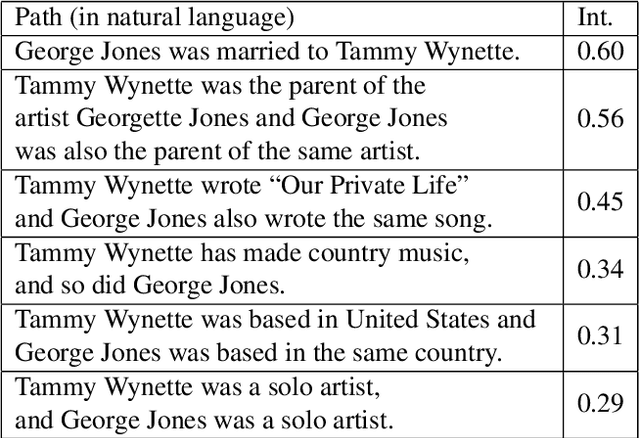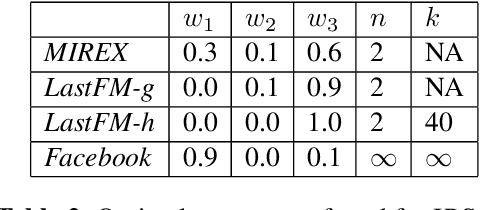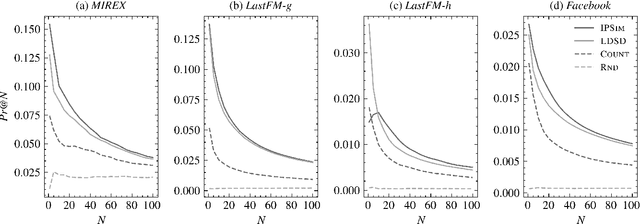An Interpretable Music Similarity Measure Based on Path Interestingness
Paper and Code
Aug 04, 2021



We introduce a novel and interpretable path-based music similarity measure. Our similarity measure assumes that items, such as songs and artists, and information about those items are represented in a knowledge graph. We find paths in the graph between a seed and a target item; we score those paths based on their interestingness; and we aggregate those scores to determine the similarity between the seed and the target. A distinguishing feature of our similarity measure is its interpretability. In particular, we can translate the most interesting paths into natural language, so that the causes of the similarity judgements can be readily understood by humans. We compare the accuracy of our similarity measure with other competitive path-based similarity baselines in two experimental settings and with four datasets. The results highlight the validity of our approach to music similarity, and demonstrate that path interestingness scores can be the basis of an accurate and interpretable similarity measure.
 Add to Chrome
Add to Chrome Add to Firefox
Add to Firefox Add to Edge
Add to Edge